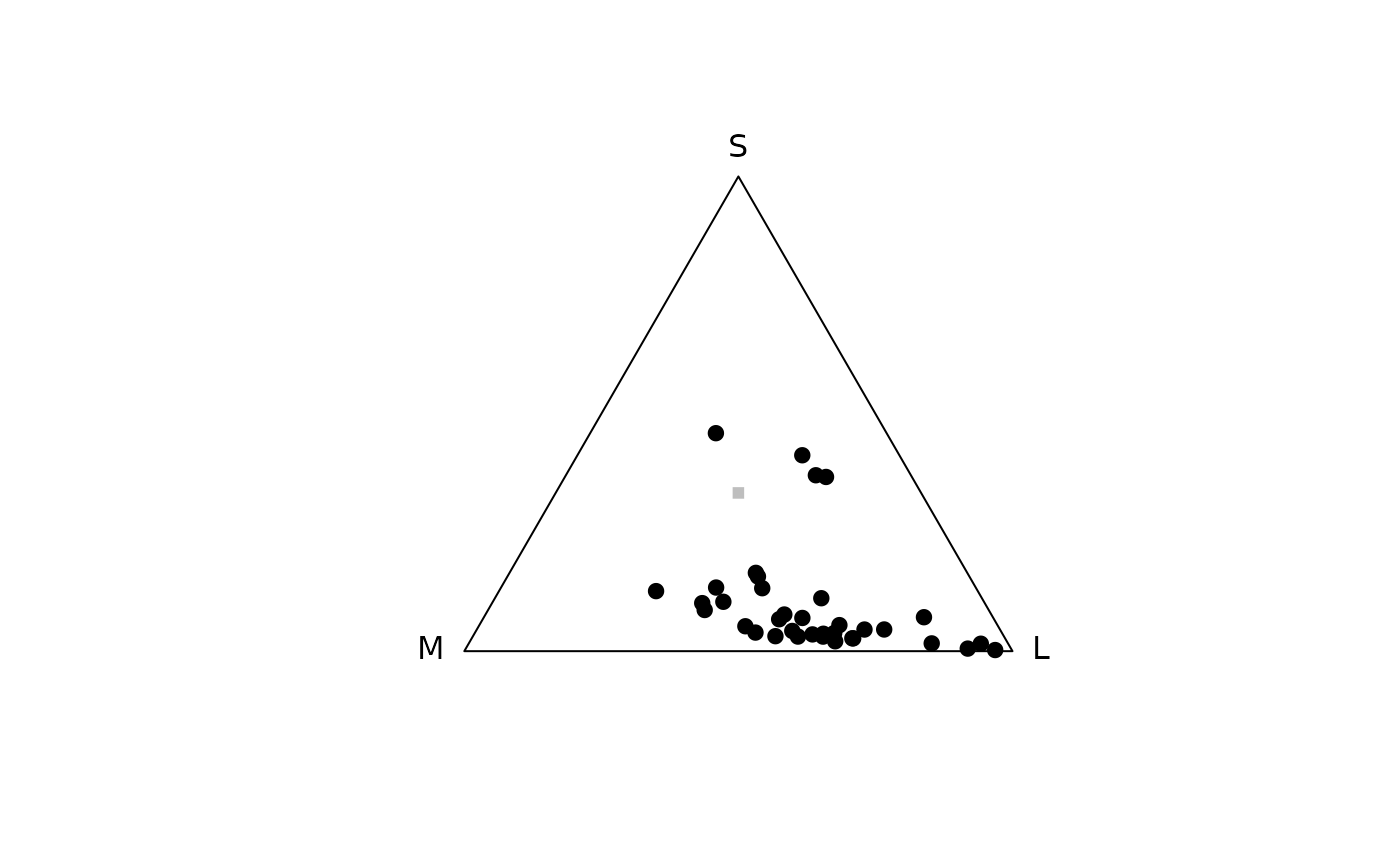Produces a Maxwell triangle plot.
Usage
triplot(
tridata,
labels = TRUE,
achro = TRUE,
achrocol = "grey",
achrosize = 0.8,
labels.cex = 1,
out.lwd = 1,
out.lcol = "black",
out.lty = 1,
square = TRUE,
gamut = FALSE,
...
)Arguments
- tridata
(required) a data frame, possibly a result from the
colspace()ortrispace()function, containing values for the 'x' and 'y' coordinates as columns (labeled as such).- labels
logical. Should the name of each cone be printed next to the corresponding vertex?
- achro
should a point be plotted at the origin (defaults to
TRUE)?- achrocol
color of the point at the origin
achro = TRUE(defaults to'grey').- achrosize
size of the point at the origin when
achro = TRUE(defaults to0.8).- labels.cex
size of the arrow labels.
- out.lwd, out.lcol, out.lty
graphical parameters for the plot outline.
- square
logical. Should the aspect ratio of the plot be held to 1:1? (defaults to
TRUE).- gamut
logical. Should the polygon showing the possible colours given visual system and illuminant used in the analysis (defaults to
FALSE). This option currently only works whenqcatch = Qi.- ...
additional graphical options. See
par().
References
Maxwell JC. (1970). On color vision. In: Macadam, D. L. (ed) Sources of Color Science. Cambridge, MIT Press, 1872 - 1873.
Kelber A, Vorobyev M, Osorio D. (2003). Animal colour vision - behavioural tests and physiological concepts. Biological Reviews, 78, 81 - 118.
MacLeod DIA, Boynton RM. (1979). Chromaticity diagram showing cone excitation by stimuli of equal luminance. Journal of the Optical Society of America, 69, 1183-1186.
Author
Thomas White thomas.white026@gmail.com
